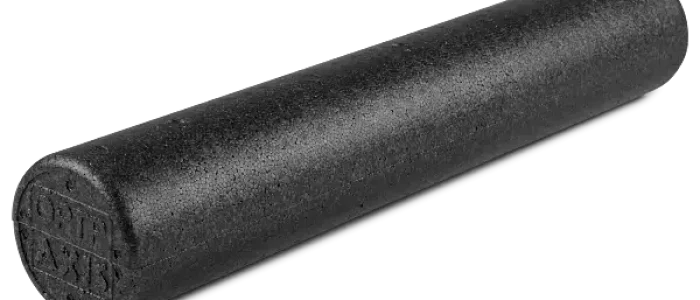
Is that ubiquitous cylinder in the corner of the gym/PT clinic/Pilates studio useful or just the latest well- marketed gym gadget?
The Effects of Self-Myofascial Release Using a Foam Roll or Roller Massager on Joint Range of Motion, Muscle Recovery, and Performance: A Systematic Review
I have been using foam rolls and recommending self-manual therapy techniques to my patients for a long time. My goal as a clinician is to provide as many self management techniques as possible to support the work done in the clinic. As an evidence based profession it is important that the research support the use of our treatments and the research on these tools is still emerging. I was happy to come across the following article from The International Journal of Sports Physical Therapy, which is a systematic review of foam rolling research.
Some methodology that makes this article stand out is:
-The investigators were extremely selective on the articles that met their criteria
– By its very nature a systematic review is a powerful tool because it pools multiple high quality studies
-The investigators set out to answer three distinct questions, which were:
1) Does Foam rolling/SMR improve range of motion?
2) Does Foam rolling before exercise effect muscle performance?
3) Does foam rolling after intense exercise reduce delayed onset muscle soreness?
The article is definitely worth reading and went into a detailed discussion of each of 14 articles that met the criteria. After reading this article there is clearly compelling evidence that the answer to all questions asked by the investigators support the use of foam rolling.
This article does however leave some questions unanswered such as:
Does the cadence/time/intensity of the session play a role in effectiveness?
Are certain foam rollers or self massagers more/less effective than others
How does foam rolling with/without the use of other interventions change its effectiveness?
I have no doubt that there will be an emerging body of evidence that we see on this topic. Hopefully, in the future we will better be able to prescribe detailed protocol, but for now we have some solid evidence for the use of foam rolling.
The bottom line:
Foam roll before and after exercise sessions. I recommend 5-10 min for each session and prefer my athletes to do a dynamic warm up along with foam rolling before and static stretching after.
There is no magic foam roll out on the market. The more expensive ones do not necessarily work better. I prefer a higher density foam roll and also like a product called “the stick” for use on quads, hamstrings and calves after hard training.
Foam rolling is an easy and inexpensive self treatment tool that there is really no reason not to use them.
-Andrew Eisen DPT
Reference:

